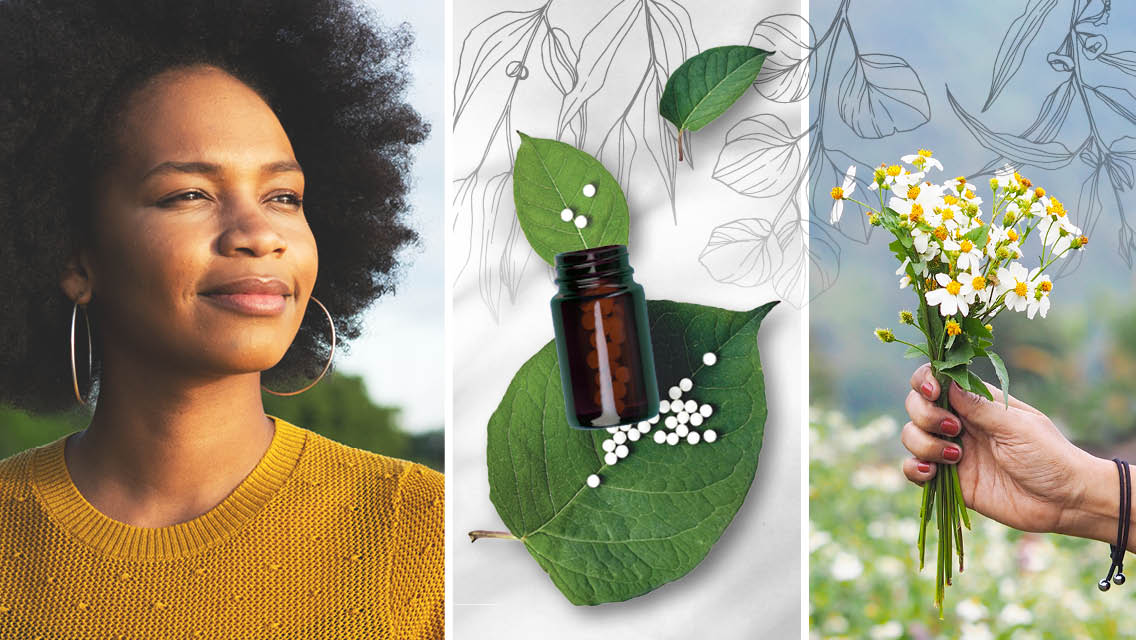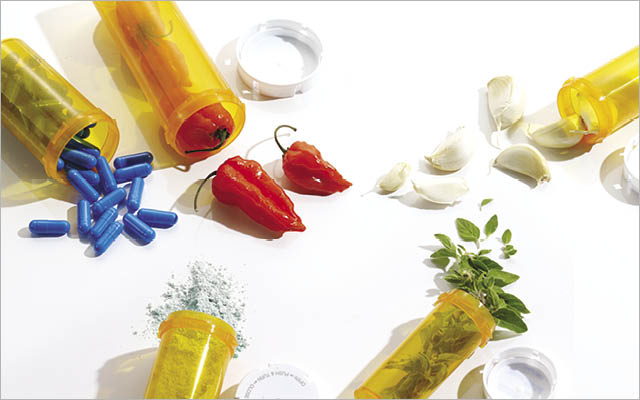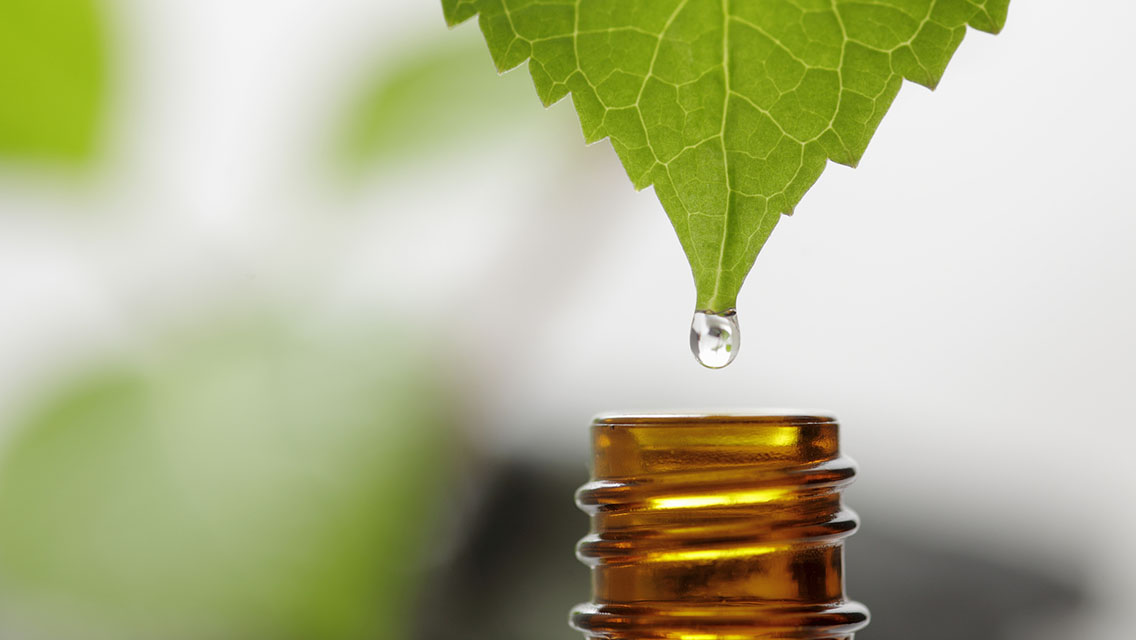In 2018, I developed a small rash on my abdomen. It lingered for weeks, slowly radiating outward from the original red spot. I happened to be interviewing a homeopath for an article I was writing, and at the end of our conversation I mentioned the rash. She suggested I try a homeopathic remedy — sulphur — which was available at my local food co-op for less than $10. The day after I took it, my rash disappeared.
A lucky coincidence? Maybe. Maybe not.
Explore this article:
Millions of people around the world rely on homeopathy to treat common minor ailments and address stubborn chronic conditions. It’s an accepted medical protocol in the health systems of Brazil, Chile, India, Mexico, Pakistan, and Switzerland. In Germany, where homeopathy originated, treatments are covered by most government medical plans, and remedies are widely available in pharmacies. In a 2021 survey, 54 percent of Germans reported having used homeopathy.
By comparison, the use of homeopathy is somewhat rare in the United States. As of 2012, the most recent year for which data is available, about 6 million Americans — less than 2 percent of the population — reported having used homeopathy within the past year. Although some integrative MDs include homeopathy in their treatment strategies, the practice remains controversial among mainstream U.S. healthcare professionals, even as many of their counterparts around the globe deploy it as a routine, low-cost intervention.
So, what is homeopathy? Kathi Fry, MD, CTHHom, a physician and master homeopath in Boulder, Colo., describes it as “a form of alternative medicine that works by stimulating the body’s inherent ability to heal itself.”
Homeopathy emerged in 1796 with the work of German physician Samuel Hahnemann, who believed that the symptoms we display when sick are manifestations of the body’s healing response. It’s based on the principle of “like cures like” (or the law of similars): Homeopathic treatment involves giving sick patients remedies that, if given to a healthy person, would cause the same symptoms the patient is presenting. In the ailing person, the remedy is meant to help stimulate the body’s inherent ability to heal.
“We have an innate intelligence in our bodies,” says Fry. “In Traditional Chinese Medicine, it’s called chi. In homeopathy, it’s called the vital force.” That power can be depleted by physical, mental, and emotional causes, and that depletion manifests in physical, mental, and emotional symptoms. “Symptoms are the way the vital force communicates and asks for help.”
You can suppress these symptoms with medication, but the problem may then simply manifest in another way. “The more ways you suppress symptoms, the louder the vital force will scream,” Fry explains.
Instead of suppressing symptoms, homeopathy aims to induce the body’s self-healing mechanisms to respond in a gentle, comprehensive way.
How Homeopathy Works
Homeopathic remedies are initially identified through a “proving” process, in which they’re given to healthy volunteers. The volunteers then record their physical, mental, and emotional symptoms. A supervisor collates these responses and looks for commonalities.
“Every remedy has a particular signature, and you match it to a patient’s symptoms based on what it showed in its proving,” Fry says. “It works like a tuning fork — an energy resonance that happens with the vital force.”
Several conventional medical treatments also operate on the law of similars. Allergen immunotherapy, for instance, treats allergies by exposing the sufferer to small traces of the offending substance to desensitize the immune system to it. And many vaccines work by introducing the immune system to an inactivated or partial pathogen, giving the body a chance to prepare to fend off the real deal.
Homeopathy’s low cost and low risk make it an appealing choice for treating common minor ailments at home.
Homeopathic remedies are more subtle. Practitioners believe that they work on an energetic level instead of a biochemical one. They’re prepared by repeatedly diluting and shaking a concentrated natural substance (usually plants, minerals, or animal products) until the substance itself can often no longer be detected. A remedy has been serially diluted in liquid (usually water or alcohol) in a ratio of one part to 100 (written as “c”) or one part to 10 (written as “x”).
Counterintuitively, the higher the dilution, the more potent the remedy. “The physical characteristics of the substance lessen as the energetic or healing properties are increased,” explains Fry. These remedies are typically administered in sugar pellets under the tongue; they are also available in tablets as well as topical ointments where appropriate.
Because most homeopathic remedies contain little or no trace of the original substance, they don’t function in the body as a molecular substance taken into a cellular receptor. They work more like an acupuncture needle than a drug or an herb.
“Homeopathy works by using energy at some level,” says Karen Lawson, MD, ABIHM, codirector of the Integrative Health and Wellbeing Coaching program at the University of Minnesota’s Earl E. Bakken Center for Spirituality and Healing.
Scientists have investigated whether substances affect the crystal structure of water in the dilution process. Others have proposed that solution dynamics or bioelectromagnetics may play a role.
But the fact is that no one knows exactly how homeopathy works. “It’s the biggest barrier to producing more research on homeopathy,” says Lawson. “The National Institutes of Health want a mechanism they can understand.”
Still, there is some research to support its effectiveness. A 2014 meta-analysis of 22 randomized controlled trials suggested that homeopathic treatment can be more effective than placebos, and “medicines prescribed in individualized homeopathy may have small, specific treatment effects.”
And an older (1997) meta-analysis that reviewed 89 clinical trials involving more than 10,000 patients found that homeopathic treatment outperformed placebos in multiple studies.
Another challenge of evaluating homeopathy with the standard biomedical research model is that, like many functional, alternative, and complementary medical practices, it’s highly personalized.
“A person’s constitution is like a jigsaw puzzle.” One person might be fiery, energetic, and assertive, with a preference for certain kinds of foods and weather, and a tendency toward certain symptoms. Another may be quiet and accommodating, with a whole different set of preferences and tendencies.
When prescribing a treatment, a homeopath will first evaluate a patient’s “constitution” — the sum total of their physical, mental, emotional, and spiritual profile. “A person’s constitution is like a jigsaw puzzle,” explains Loretta Butehorn, PhD, DIHom, a psychologist and homeopath in Provincetown, Mass. One person might be fiery, energetic, and assertive, with a preference for certain kinds of foods and weather, and a tendency toward certain symptoms.
Another may be quiet and accommodating, with a whole different set of preferences and tendencies. “The homeopath looks at the whole constitution and matches that picture with a remedy that has similar characteristics,” Butehorn says.
This kind of individuation is what allows homeopathy to be so precise — for example, targeting specific issues like “motion sickness that’s improved by lying down.” “You can have 30 people with the same diagnosis, and they each need a different remedy,” says Fry. “If a kid has a cough, the remedy will differ depending on if it’s a dry or wet cough, or if it’s worse in the morning or the evening.”
This level of personalization is a hurdle to studying homeopathy in randomized controlled trials, because typically everyone in a treatment group receives the same remedy. But research models are becoming more flexible to accommodate personalized systems of care, says Lawson.
Applied clinical research assigns people to receive either standard medical care or an individualized treatment, such as acupuncture, chiropractic care, or homeopathy. “Then you can look at these systems’ efficacy in clinical practice,” she explains.
When to Use Homeopathy
Homeopathy’s low cost and low risk make it an appealing choice for treating common minor ailments at home. Of the 6 million Americans who used homeopathy in 2012, only 19 percent reported seeing a provider. The remaining 81 percent presumably self-prescribed over-the-counter remedies, according to a 2018 report. (In the United States, these formulations are not FDA-approved, but they are subject to the same marketing restrictions as other supplements.)
Reputable brands, such as Boiron, are available at health-food stores nationwide in a range of potencies (30c is most common for household use), usually for around $10 per remedy. Each bottle or tube contains scores of pellets, and the doses are typically small — usually about four or five pellets.
Companies such as Hahnemann Labs offer kits in a range of sizes for home and travel. (For four common remedies to include in your home first-aid kit, see below.)
Homeopathy can ease acute mental and physical complaints, such as mild anxiety, depression, digestive issues, and respiratory infections, as well as symptoms related to chronic health concerns, including ADHD, allergies, and arthritis.
It may also be helpful when used in conjunction with conventional treatment approaches. “For something like a broken bone, you want a cast,” says Lawson. “But for persistent pain from a fracture, homeopathy can help.”
Homeopathy is not suited to address a tumor or other similarly serious or severe conditions. Yet when used in combination with conventional care, “it can help shift the underlying predilection energetically, and help with adjunct symptoms and responses to things like chemotherapy or radiation,” Lawson says.
In the early stages of arthritis, homeopathy has been found to soothe pain and reduce inflammation. But once arthritis has advanced, it won’t help with deformed joints.
“When major anatomical changes exist, homeopathy should be thought of as complementary or supportive of other more conventional therapies but not as the primary therapy.”
“When major anatomical changes exist, homeopathy should be thought of as complementary or supportive of other more conventional therapies but not as the primary therapy,” write integrative-health expert Wayne B. Jonas, MD, and fellow integrative practitioner Jennifer Jacobs, MD, MPH, in Healing With Homeopathy.
Self-administration for minor health complaints is where homeopathy shines. It’s ideal for families with young kids. Lawson treated her daughter with nothing but homeopathy until she was 7, when she needed antibiotics for strep throat. “Kids are way overmedicated, including for behavioral issues like ADHD,” she argues. “Homeopathy can be far less problematic than prescription meds. But for anything other than acute transitory issues, it should be prescribed by a trained homeopath.”
“A lot of what kids have comes and goes, like teething or an upset stomach,” Butehorn notes. “They can bounce right back with homeopathy, because they don’t have entrenched patterns of energetic insult. The older you are, the more life challenges accumulate that can impact your energy.”
Homeopathy doesn’t work biochemically, so it’s a good choice for those looking to cut back on standard drugs. “Homeopathy is an avenue for those who don’t want to pursue pharmaceuticals, whether because of cost issues or they’re allergic, pregnant, sensitive to medications, or on other medications that might interfere,” Lawson says.
“I work with a lot of people with addiction issues, where the liver is severely compromised,” notes Butehorn. “Homeopathy is an alternative for them that’s not chemically based.”
“Homeopathy is an avenue for those who don’t want to pursue pharmaceuticals, whether because of cost issues or they’re allergic, pregnant, sensitive to medications, or on other medications that might interfere.”
Unlike herbs and supplements, homeopathic remedies typically don’t interfere with pharmaceutical treatments. But those taking medications often find that when they add these remedies, they’re able to lower their medication dose. “We see this frequently in people on psychiatric medication — when we treat them with antidepressants and homeopathy, sometimes over time the need for the antidepressant decreases.”
Fry has observed the same thing in patients with thyroid conditions: “A remedy can help restore thyroid function, so they might need to titrate down that dose of thyroid medication.”
Because homeopathy can reduce the need for medication, people using it for chronic conditions should make sure they’re working with their primary-care provider to continually evaluate levels and dosages.
Are there other risks to be aware of?
“The worst that can happen is that you take too much of a correct remedy and your symptoms get worse,” says Butehorn. This is known as an “aggravation.” It can happen if someone is particularly sensitive to a remedy, or they take too high of a dose. But it’s generally short-lived and self-resolving; a little strong coffee or some mint can alleviate the situation, Fry says.
Taking an incorrect remedy probably won’t do any harm, she adds; it just won’t have any effect. Unlike over-the-counter medications, homeopathic remedies come with no risk of chemical dependency, overdose, or toxicity.
Whether you’re experimenting with remedies at home or working with a skilled practitioner, homeopathy offers a welcome addition to the healing toolkit. As Jonas and Jacobs note in Healing With Homeopathy, “These are drugs . . . that work with the body. These are medicines with eyes and ears.”
Working With a Homeopath
For minor ailments such as rashes, warts, bruises, an upset stomach, colds, and the flu, self-treatment is generally safe and easy. For more complex or chronic complaints, including fibromyalgia, chronic fatigue, arthritis, and mental-health conditions, it’s best to seek out a professional homeopath, says Karen Lawson, MD, ABIHM, codirector of integrative health coaching at the University of Minnesota’s Earl E. Bakken Center for Spirituality and Healing. She cautions pregnant women to work under the guidance of a pro.
Complex conditions that haven’t responded to conventional treatment are often good candidates for homeopathy. For instance, some homeopaths are seeing positive results treating patients with long COVID.
The first step in working with a homeopath is a substantial intake appointment. Over one to two hours, the practitioner takes a detailed health history and asks questions geared toward understanding a patient’s constitution.
When prescribing a treatment, a homeopath will first evaluate a patient’s “constitution” — the sum total of their physical, mental, emotional, and spiritual profile.
“First, I want to make sure they’ve taken advantage of what science has to offer,” says Loretta Butehorn, PhD, DIHom, a psychologist and homeopath in Provincetown, Mass., who often works in tandem with her patients’ primary-care providers. “Then I take a history to get their constitution, ask when the problem showed up, what was happening in their life at that time, and get any other symptoms they’re experiencing, from head to toe.”
Then she chooses a remedy based on the unique jigsaw puzzle presented by that patient.
Kathi Fry, MD, CTHHom, a physician and master homeopath in Boulder, Colo., generally starts patients on a low-dose remedy (6c or 9c for kids; 12c or 30c for adults) and follows up at six weeks. If the remedy seems to be working, she may increase the dose over time.
Unlike medications to manage chronic disease, homeopathic remedies aren’t meant for long-term use. The remedies are meant to stimulate the body’s natural healing abilities and then be discontinued.
In the United States, homeopathic certifications and diplomas aren’t regulated at the national level. (Some states do certify homeopathic training, however; Connecticut, for example, requires that homeopaths also have an MD or DO degree.) But the American Institute of Homeopathy — which actually predates the American Medical Association by three years — oversees a specialized certification.
To receive a Diplomate of Homeotherapeutics (DHt), physicians must obtain 350 education credits and pass written and oral examinations. You can find a homeopathic provider on the American Institute of Homeopathy’s website or those of the North American Society of Homeopaths and the Council for Homeopathic Certification.
4 Essential Remedies for Your At-Home Homeopathic First-Aid Kit
1. Nux vomica
Good for: Upset stomach from overeating or overindulging.
Homeopathic notes: Derived from the poisonous strychnine tree, nux vomica is ideal for treating heartburn or drowsiness from eating or drinking too much. “The quintessential remedy for ailments from ‘high living,’ usually the first remedy to take for garden-variety heartburn or indigestion from drinking too much coffee or alcohol or eating too much spicy food,” says Kathi Fry, MD, CTHHom.
2. Arnica montana
Good for: Bruising, shock, head injury.
Homeopathic notes: Arnica’s effects are primarily anti-inflammatory: It’s good for treating muscle pain, stiffness, swelling from injuries, and bruises. A 2021 meta-analysis published in Frontiers in Surgery found arnica to be comparable to pharmaceutical anti-inflammatories for reducing postoperative swelling and bleeding.
3. Gelsemium sempervirens
Good for: Headaches, influenza, sleeplessness due to anxiety and anticipation.
Homeopathic notes: “This is a big remedy for the flu, chronic fatigue, and people with postviral fatigue — as in long COVID,” says Fry.
4. Allium cepa
Good for: Allergies, runny nose, watery eyes.
Homeopathic notes: Derived from onion, this remedy is effective for treating a running nose, especially with a clear discharge. “If you’ve ever chopped an onion with tears streaming down your face, you know what it’s like to need Allium cepa. The hallmark symptom is a sensation of burning irritation,” explains Fry.
Homeopathy at Home
There are several good resources for those looking to learn enough to self-administer homeopathy at home:
- The Complete Homeopathy Handbook by Miranda Castro
- What’s the Remedy for That? by Kathi Fry, MD, CTHHom
- Healing With Homeopathy by Wayne B. Jonas, MD, and Jennifer Jacobs, MD, MPH




